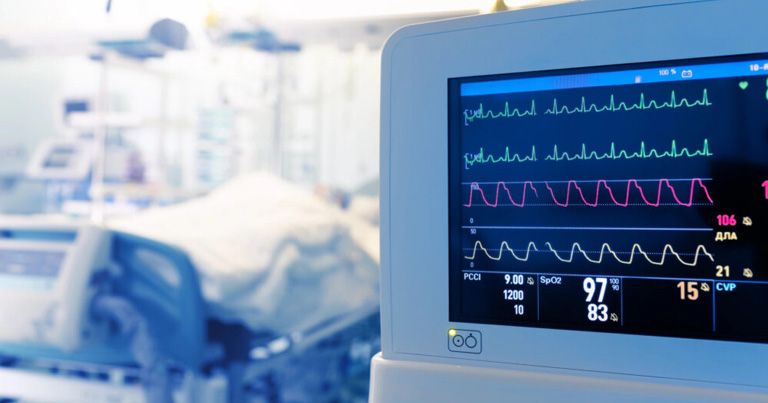What happens in the ICU?
You just received a call from the hospital that your loved one is admitted to ICU. This sounds scary. You already know what is ICU, but you don’t know what to do.
- Why someone get’s admitted to ICU?
- What is the chance of survival for ICU patients?
- What is the recovery time after ICU admission?
- Where do patients end up after ICU?
Let’s answer some of these questions so that you have a better understanding of the ICU outcomes.
Why someone get’s admitted to ICU?
Patients may be admitted to the ICU for a variety of reasons, including:
- Severe infections
- Severe sepsis or septic shock
- Major surgery
- Heart attacks
- Stroke
- Organ failure (respiratory failure, kidney failure, liver failure, ….)
The ICU is staffed with a highly trained team of healthcare professionals who work together to monitor and treat patients around the clock. Patients in the ICU require close monitoring and often need advanced life support measures, such as mechanical ventilation or dialysis. The goal of ICU care is to stabilize patients and help them recover, with the ultimate goal of returning them to their normal lives.
Sometimes, patients require ICU care for closer monitoring to prevent patient from deteriorating or rapid intervention if that happens.
What is the chance of survival for ICU patients?
The average survival rate for all ICU admissions in the United States is difficult to quantify as it can vary depending on numerous factors such as the severity of illness, underlying conditions, and age of the patient. However, according to a systematic review and meta-analysis of ICU mortality rates published in the journal Critical Care Medicine in 2014, the pooled ICU mortality rate across 42 studies was 22.1% (95% confidence interval, 20.9% to 23.3%)1.
In another systematic review published in the Journal of Intensive Care Medicine in 2020, the reported ICU survival rates in the United States varied widely depending on the patient population and reason for ICU admission. Overall, the review found that the reported ICU survival rates ranged from 60% to 92%2.
What is the recovery time after ICU admission?
Patients who have longer ICU stays generally have longer recovery times, as they are more likely to have experienced more severe illness and undergone more intensive treatments. However, studies have shown that many patients continue to experience physical, psychological, and cognitive impairments for months after discharge from the ICU.
One study found that for patients who survived a critical illness requiring ICU admission, the median time to recovery was 5 months for those who spent 1-7 days in the ICU, 8 months for those who spent 8-14 days, and 12 months for those who spent 15 or more days3. Other studies have also reported similar associations between longer ICU stays and longer recovery times4,5.
According to Needham et al. median time to recovery for physical functioning was 6 months, and for psychological and cognitive functioning, was 12 months after ICU discharge. However, some patients may experience impairments for a longer period of time or even permanently4.
Where do patients end up after ICU?
As patients improve, patient may end up in different settings, depending on their medical needs and overall condition. According to a study published in the American Journal of Respiratory and Critical Care Medicine, the most common discharge destination for patients after ICU admission is an acute care hospital (37.7%), followed by home (26.3%), skilled nursing facility (19.1%), and inpatient rehabilitation facility (9.8%)5.
- Step down unit
Most patient will be transferred to lower acuity unit within the hospital after their critical illness is resolved. Depending on the hospital, these units may have different names: Progressive Care Unit (PCU), Intermediate Care Unit, Step-down unit or …. This will give more time for the patient to continue to improve and also finalize any medical treatment and procedures that needs to be completed before discharge.
- Skilled nursing facility (SNF)
A skilled nursing facility is a type of healthcare facility that provides round-the-clock nursing care and rehabilitation services to patients who require a higher level of medical care than what can be provided at home or in an assisted living facility. These facilities are staffed by licensed nurses and therapists who work with patients to help them recover from injuries, illnesses, or surgeries. - Assisted living facility (ALF)
Assisted living facilities are residential communities designed for seniors or patients who require some level of assistance with activities of daily living (ADLs), such as bathing, dressing, and medication management. Residents typically have their own private living spaces and can receive assistance as needed from trained staff. - Inpatient Rehabilitation Facility (IRF):
Inpatient rehabilitation facilities are healthcare facilities that provide intensive rehabilitation services to individuals who have suffered from serious illness, injury, or disability. They offer coordinated medical care and therapy programs to help patients regain functional abilities and improve their quality of life. IRFs typically provide more comprehensive and specialized care than traditional hospitals or skilled nursing facilities.
References:
- Vincent JL, et al. Assessment of the worldwide burden of critical illness: the Intensive Care Over Nations (ICON) audit. Lancet Respir Med. 2014;2(5):380-386. doi:10.1016/S2213-2600(14)70061-X.
- Brummel NE, et al. Frailty and Subsequent Disability and Mortality among Patients with Critical Illness. Am J Respir Crit Care Med. 2017 Mar 1;195(5):643-52. doi: 10.1164/rccm.201602-0335OC. PMID: 27653930; PMCID: PMC5358987.
- Kamdar, B. B., et al. Joblessness and lost earnings after acute respiratory distress syndrome in a 1-year national multicenter study. American journal of respiratory and critical care medicine, 197(8), 1017-1026.
- Needham, D. M., et al. Improving long-term outcomes after discharge from intensive care unit: report from a stakeholders’ conference. Critical care medicine, 40(2), 502-509.
- Oeyen, S. G., et al. Quality of life after intensive care: a systematic review of the literature. Critical care medicine, 44(6), 1269-1277.
- Hua, M., et al. Early and late unplanned rehospitalizations for survivors of critical illness*. American Journal of Respiratory and Critical Care Medicine, 200(9), 1092-1101. doi: 10.1164/rccm.201902-0275OC







